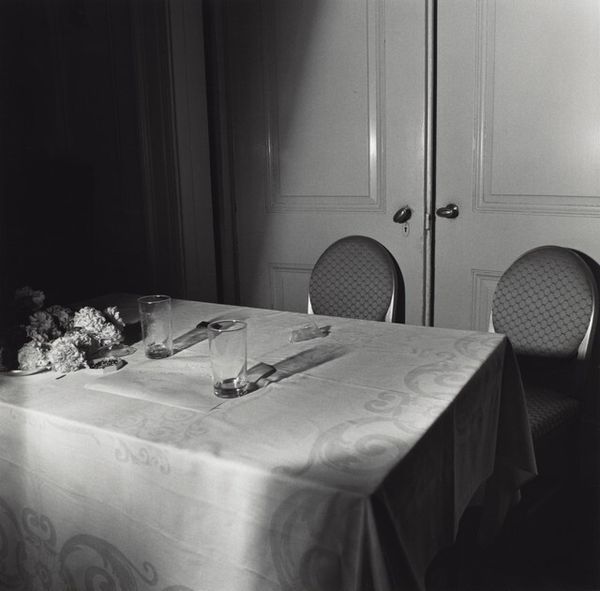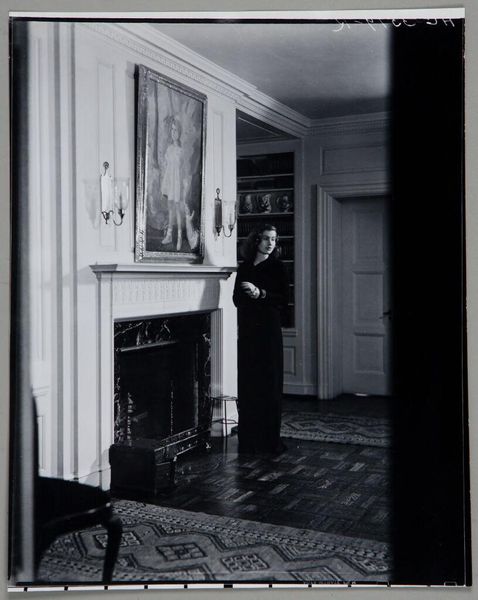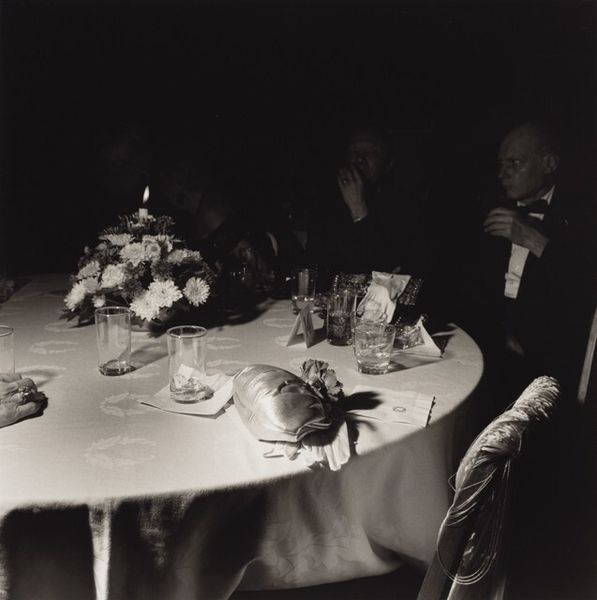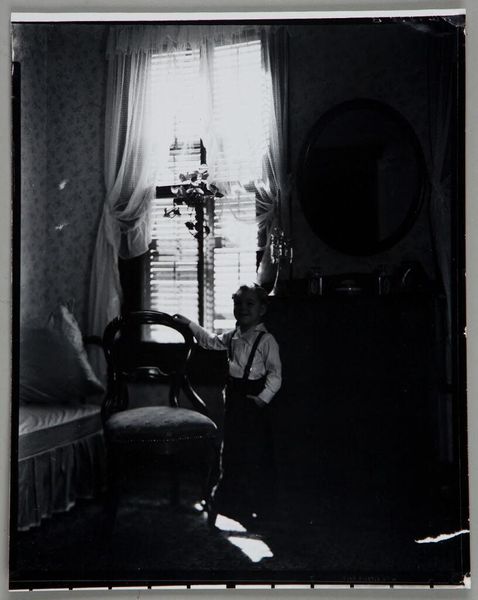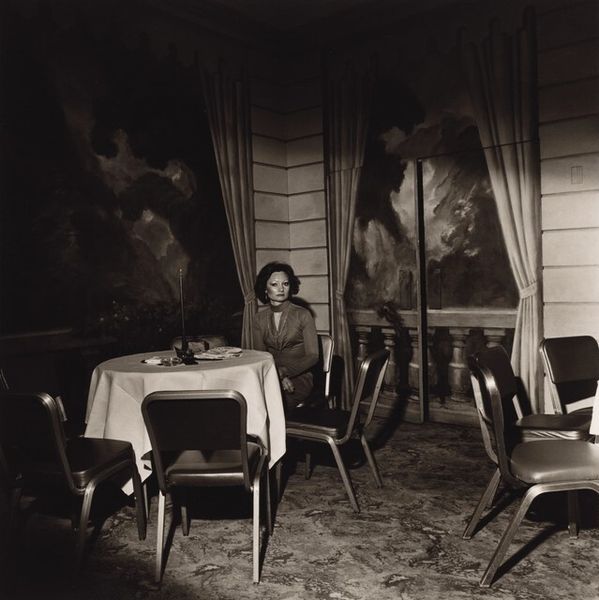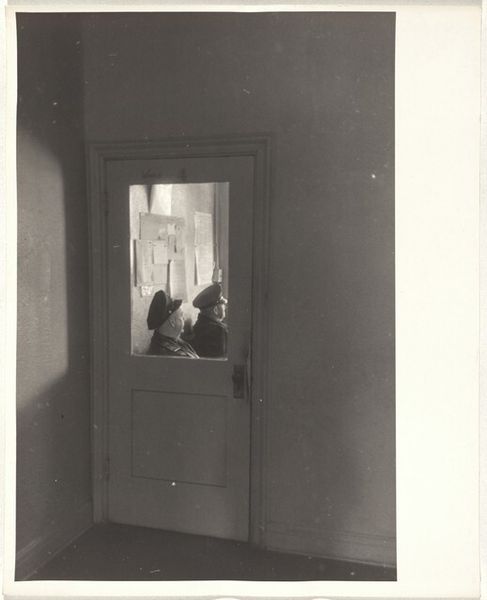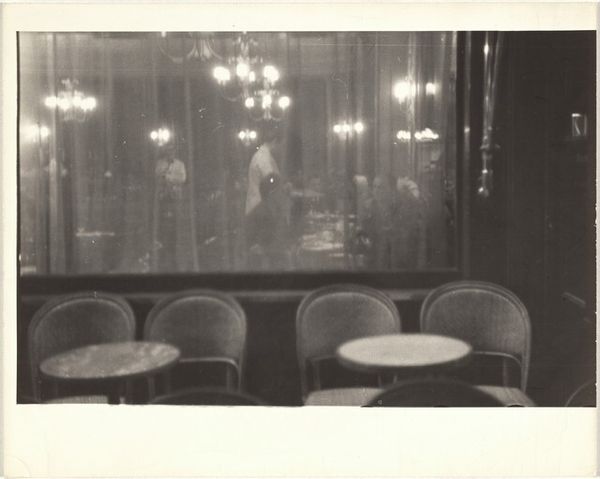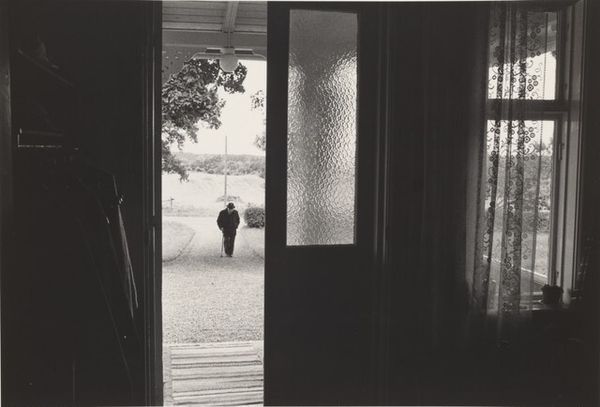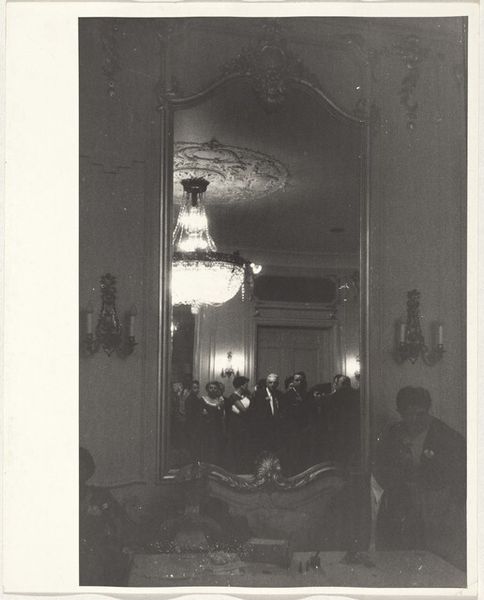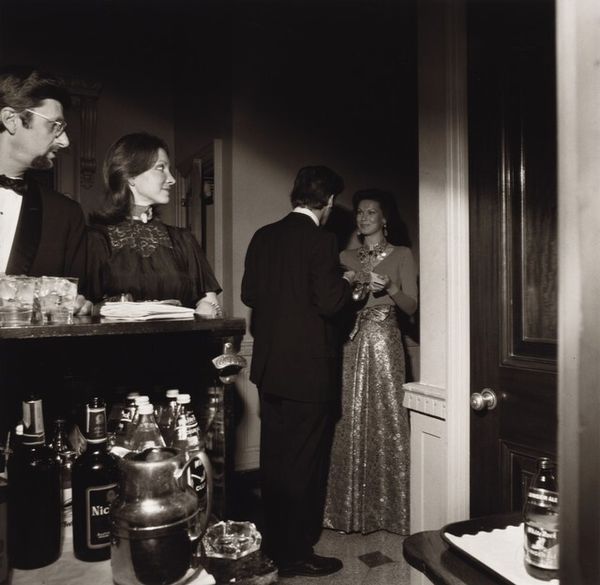
photography, gelatin-silver-print
#
portrait
#
film photography
#
black and white photography
#
social-realism
#
photography
#
historical photography
#
gelatin-silver-print
#
monochrome photography
#
genre-painting
#
modernism
Dimensions: image: 35.5 × 35.6 cm (14 × 14 in.) sheet: 50.6 × 40.4 cm (19 15/16 × 15 7/8 in.)
Copyright: National Gallery of Art: CC0 1.0
Curator: This is "Russian Ball, New York City," a photograph by Larry Fink from 1977. Fink, known for his social documentary style, often captured moments of the wealthy and powerful. He used a gelatin-silver print, in his unique way to reveal social dynamics. Editor: Wow, my first thought is it feels like we're spying! The composition, with that door frame acting as a filter, a kind of keyhole, heightens this voyeuristic feeling. Like peeking into someone else's glamorous, maybe slightly melancholic, evening. Curator: The use of black and white amplifies this. Without color, the viewer focuses on light and shadow, creating a stark contrast, almost an exposé, of these privileged settings. The contrast also echoes historical narratives of photographic representation, especially concerning class and identity. Editor: Absolutely. The dark void behind them—those subtle points of light, like eyes watching—adds a touch of surrealism, almost menacing. It makes you wonder what’s lurking just beyond the gilded surface. It makes the interior and exterior merge, with a feeling of unheimlich strangeness. Curator: I see the surrealism as indicative of the artist's commentary. In viewing such images, one questions what constitutes "high" society, and what structures perpetuate social differences. Furthermore, we must analyze the photographer's perspective, and how their gaze may impact readings of the event. Editor: It does seem almost judgemental. The number thirteen on the table, right there for everyone to see—is Fink pointing something out, beyond social class, but almost hinting that society is unlucky or has to be read pessimistically? It all just creates this deliciously unsettling narrative. Curator: Fink indeed uses photographic language as social critique, revealing class distinctions and offering them up for interrogation. He provides an access point through which audiences can dissect socio-economic inequalities. It is also through the lens that narratives around power are constructed. Editor: Yeah, that is something, I did not imagine getting to such points when looking at the picture at first glance! I guess that is the genius of the photograph. A snapshot that slowly burns its way to deeper meaning as you keep watching it. Curator: I agree. It remains relevant because it still resonates today as we strive to address uneven power dynamics. Art like this becomes part of the discourse.
Comments
No comments
Be the first to comment and join the conversation on the ultimate creative platform.
